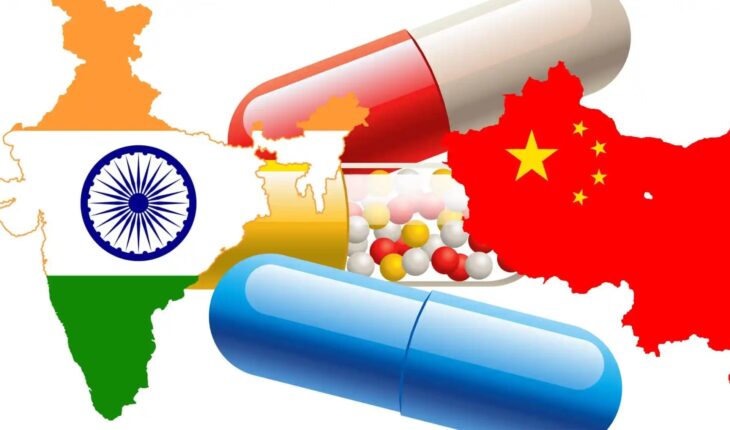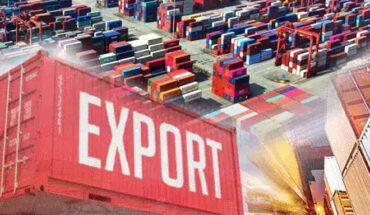China is the manufacturing hub as China’s share in Gross Production stood at 33 per cent as per the Organisation for Economic Co-operation and Development (OECD) Trade in value-added (TiVA) Database 2023, and this was 2.75 times of the U.S. share in Gross Production of the World. And the U.S. ranks 2nd in terms of Gross Production. China’s production exceeded that of nine next largest manufacturers combined. Richard Baldwin (2024) pointed out that six nations manufacture at least 3 per cent of the world total.
By 1995, top 10 countries in manufacturing used to have almost 65 per cent share in gross output and China’s share was around 5 per cent at that time. By 2020, share of top 10 countries in manufacturing has reached almost equal to China’s share in gross output which reflects the strength of Chinese manufacturing capability.
COVID-19 pandemic compelled many developed countries to rethink about their dependence on China, and look for alternative sources of supply. Many countries started working on taking up the role of ‘Plus One’. Indo-Pacific Economic Framework (IPEF) was touted as an alternative as it accounted for almost 40 per cent of the global GDP. Countries such as the U.S., Japan, Philippines, Australia, New Zealand, Brunei, South Korea, Vietnam, Thailand, Malaysia, Singapore, Indonesia, and India came together.
In May 2020, it was widely highlighted that a total area of 461,589 hectares was identified across India to attract businesses moving out of China. This identified land pool was almost double the size of Luxembourg. Pharmaceutical sector was identified as the focus area for promoting manufacturing along with other nine sectors.
In pharmaceuticals, China is the world’s largest producer of Active Pharmaceutical Ingredients (APIs), and many countries including the U.S. is dependent heavily on the drugs that either come from China in finished form or from APIs which are sourced from China. During COVID-19 outbreak, it was realized by many countries that supply of essential medicines must not be compromised by just relying on a single source or country which is potentially unreliable. In recent tariff war between the U.S. and China, this has become another reminder.
As per the report by Bain & Company (2025) titled, ‘Healing the World: A Roadmap for making India a Global Pharma Exports Hub’, China is the leader in pharmaceutical exports (volume terms) if we observe the data of 6-digit India Trade Classification Harmonized System (ITC-HS) pertaining to APIs, Formulations, Biosimilars and Vaccines. France has second rank with just one-fifth in terms of volume in comparison to China whereas India ranked third with the size of almost 17.88 per cent of China in pharmaceutical exports.
In Key Starting Materials (KSMs), Drug Intermediates, and Active Pharmaceutical Ingredients (APIs), India must lower dependence on imports and enhance the capability in exports. In last almost four decades, India has seen a major shift. In 1991, there was less than one per centdependence on China for APIs. Then in 2008, due to Beijing Olympics, several API plants were closed in China which led to increase in the price of those bulk drugs which India was sourcing primarily from China, to the extent of 20 per cent. By 2011, the dependence on China for APIs rose to 60 per cent. BCG-CII Report in 2016 had identified that nearly 80 per cent of many key materials (mostly intermediates and some APIs) used to manufacture at least 12 essential drugs were being imported from China. It was only in FY21 that API exports from India stood at Rs. 32,856 Crore and API imports stood at Rs. 28,529 Crore. Quantity of API exports stood at 3,24,331 MT whereas Quantity of API imports was 3,90,476 MT. This partly reflected quality and complexity of APIs exported from India. Moreover, this was a positive sign in presenting India as ‘China Plus One’ in APIs.
Recent developments place ‘Plus One’ candidates in an advantageous position, e.g., the US Biosecure Act intends to prevent Chinese biotech companies and manufacturers from benefiting from US government funding directly or indirectly by prohibiting companies which use manufactured goods and services from certain Chinese companies, and those linked to government/military of China. Second major initiative is Biopharmaceutical Alliance formed by the US, EU, Japan, South Korea and India. Inaugural meeting took place as part of Bio International Convention 2024 that was held in San Diego. The purpose was to build resilient supply chain in the biopharmaceutical sector.
On domestic front, certain initiatives have been taken to build strength in pharmaceutical sector. First, the Production Linked Incentive (PLI) Scheme for promotion of domestic manufacturing of critical Key Starting Materials (KSMs)/ Drug Intermediates (DIs) and Active Pharmaceutical Ingredients (APIs) in India has been launched with a financial outlay of Rs. 6,940 crores and the tenure from FY 2020-2021 to FY 2029-30. This Scheme provides for financial incentive to 41 identified products. A total of 51 applicants have been selected under the scheme. Secondly, the PLI Scheme for Pharmaceuticals, with a financial outlay Rs. 15,000 crores and the tenure from FY 2020- 2021 to FY 2028-29, provides for financial incentive to 55 selected applicants for manufacturing of identified products under three categories for a period of six years. The eligible drugs under this scheme include APIs. Thirdly, the Scheme for Promotion of Bulk Drug Parks provides for a financial outlay of Rs. 3,000 crores and the tenure from FY 2020-2021 to FY 2024-25. The Scheme provides for financial assistance to three States for establishing Bulk Drug Parks. The success of these schemes will make India self-reliant. Additionally, this will present India as a fit candidate for ‘China plus One’ tag in pharmaceuticals.
Biopharmaceuticals is another area which has immense potential. India’s BioEconomy 2024 report by BIRAC pegged India’s Biopharma at $53.8 Bn with almost 35.65 per cent share in India’s BioEconomy. It should be seen in the background that just 9 manufacturers account for over 70 per cent of the global supply in case of Global Vaccine Market. 3 vaccine manufacturers (Serum Institute of India, Bharat Biotech International, and Biological E Limited) out of these 9 manufacturers are from India.
When these facts are seen in comparison to Ireland then Indian Pharmaceutical Industry’s size seems insignificant. Ireland exported $92 Bn of pharmaceutical products in 2023 thereby becoming the 3rd largest exporter of pharmaceutical products in the world For Ireland, pharmaceutical products were the most exported product in 2023, and exports to the U.S. alone stood at $31.6 Bn. In contrast to this, India’s total pharmaceutical exports for FY25 stood at $30.47 Bn.
Recent data has shown that medicines from Indian companies provided $219 Bn in savings to the US healthcare system in 2022 alone. Between 2013 and 2022, savings to the US Health System stood at $1.3 Trn due to the use of generic medicines exported by Indian pharmaceutical companies. The U.S. will generate additional $1.3 Trn in savings over the next five years. The U.S. alone is a huge market for Indian pharmaceutical products. India is importing about $800 Mn worth of pharma products from the US and exported pharma products worth US $8.9 Bn. So, the US remained the largest market for Indian pharma exports contributing more than one-third of the pharmaceutical exports. This shows the strength of Indian Pharmaceutical Industry.
What Ajay Banga, as the World Bank President said on July 28, 2023, when he was addressing a G20 Finance Ministers’ and Central Bank Governors’ meeting at Gandhinagar seems most relevant: “India has a window of three-to-five years to seize this opportunity to attract investment. I think India’s opportunity currently is to cash in on the ‘China plus One’ opportunity. This opportunity won’t stay open for 10 years.” Now, we are in 2025, and two years have already passed, so it has become crucial to realign national efforts with speed and scale to become ‘Plus One’ in Pharmaceuticals in sub-segments where we lack.
Dr. Anil Kumar Angrish-Associate Professor (Finance and Accounting), Department of Pharmaceutical Management, NIPER S.A.S. Nagar (Mohali), Punjab
Disclaimer: Views are personal and do not represent the views of the Institute.






